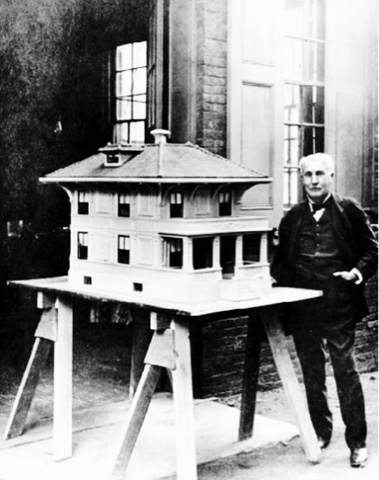 |
| Nikola Tesla |
 |
| Nikola Tesla |
 |
| Nikola Tesla |
 |
| Nikola Tesla |
 |
| Nikola Tesla |
I'm reading the "companion volume" to the "Thomas A. Edison: Inventor of the Modern World" biography.
From its author, David J. Kent:
“This book is designed to appeal to general readers with a wide range of interests.
Like thrilling personality insights? The book is chock full of interesting stories on Tesla from his '100-bug-powered' windmills as a youth to his practical jokes on Mark Twain in his heyday to his dispute with Albert Einstein as he entered his twilight years.
Into graphic novels? 'Tesla: The Wizard of Electricity' includes many historical comics and photos to spotlight key events and figures in Tesla's spectacular life. The book is an amazing visual experience.
An invention buff? The book captures the prolific inventive mind of Nikola Tesla and how many of his inventions were so far ahead of their time that we are still today relying on his patents for new discoveries.
Turned on by conflict and tension? Tesla's life can be summed up by one of my chapter titles -- 'A Man Always at War.' Delve into the complex relationships he had with Thomas Edison, George Westinghouse, Guglielmo Marconi, J. P. Morgan, and others that were sometimes colleagues, and sometimes rivals.
Prefer serious historical biography? 'Tesla: The Wizard of Electricity' traces the great man's life from his childhood in the military frontier, through his schooling and employment in the grand capitals of Europe, to his tumultuous, yet most productive, years in New York City, Colorado Springs, Chicago, Pittsburgh, and Niagara Falls.
In short, the book provides insights into a man who has been largely ignored by history despite his huge contributions to modern life. A man who over 100 years ago anticipated that one day we would all be carrying around hand-held devices capable of instant communication across vast distances. Who a century ago promoted and developed renewable energy sources to replace fossil fuels. A man who left us a legacy that is just now being rediscovered by scientists, the public, and perhaps most ironically -- pop culture."
David J. Kent is the author of two books on Nikola Tesla -- "Tesla: The Wizard of Electricity" and an e-book, "Nikola Tesla: Renewable Energy Ahead of its Time."















































